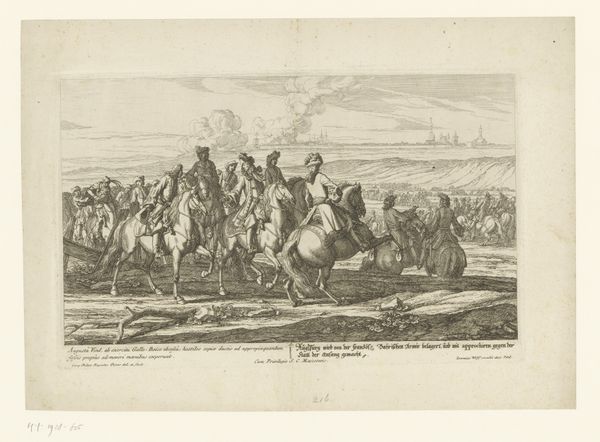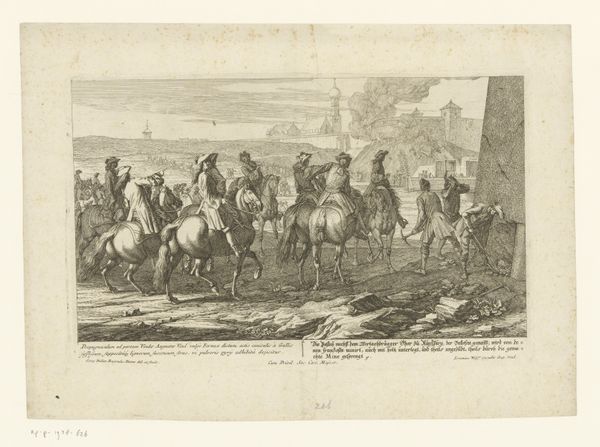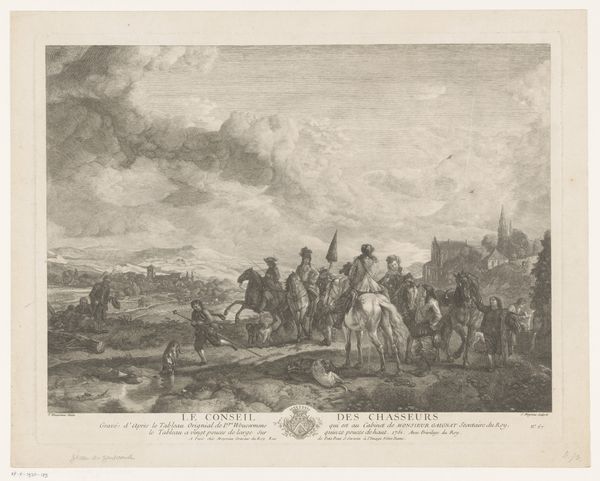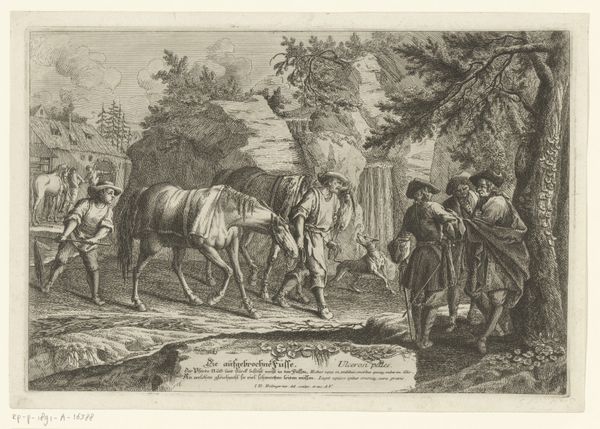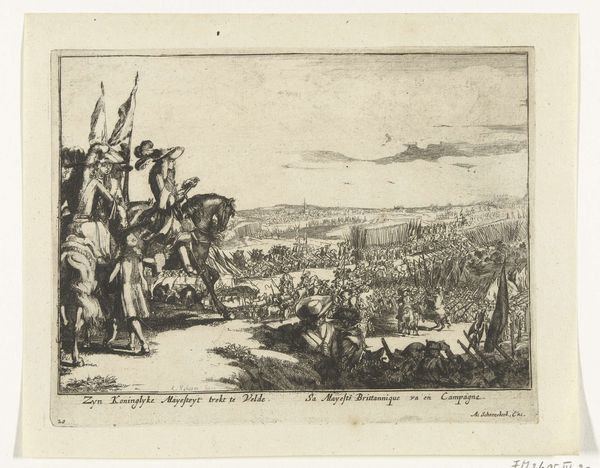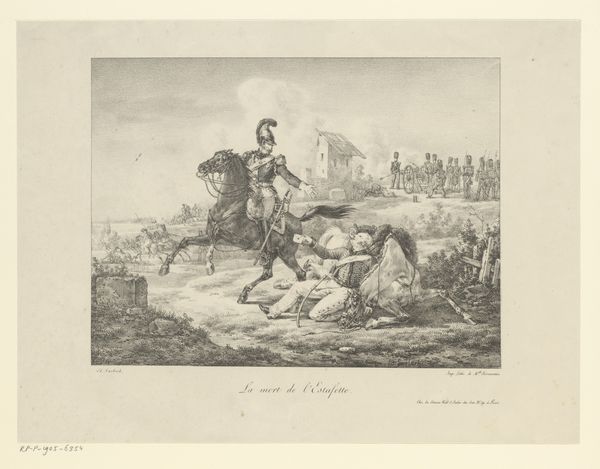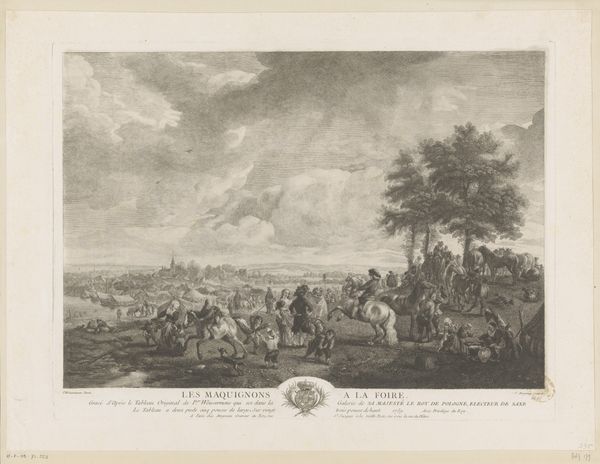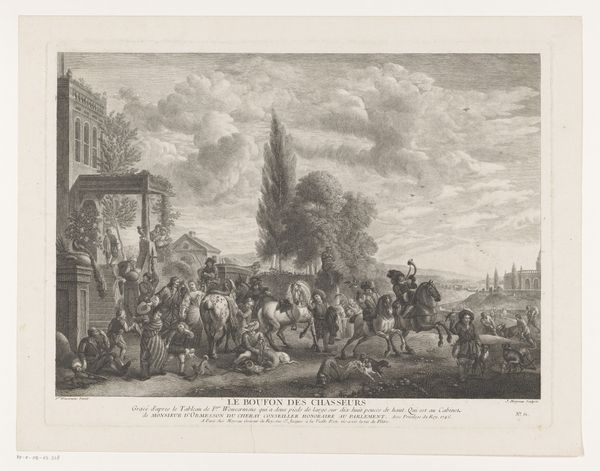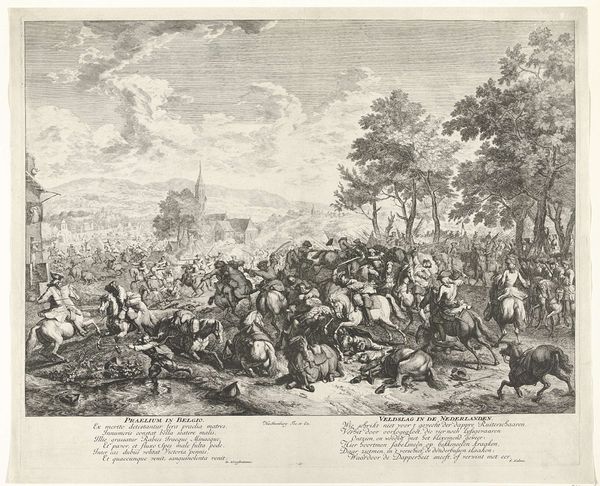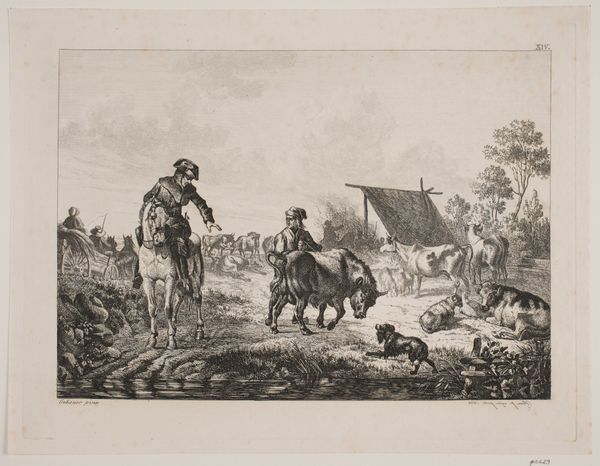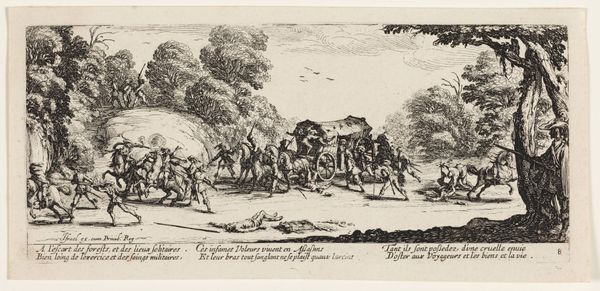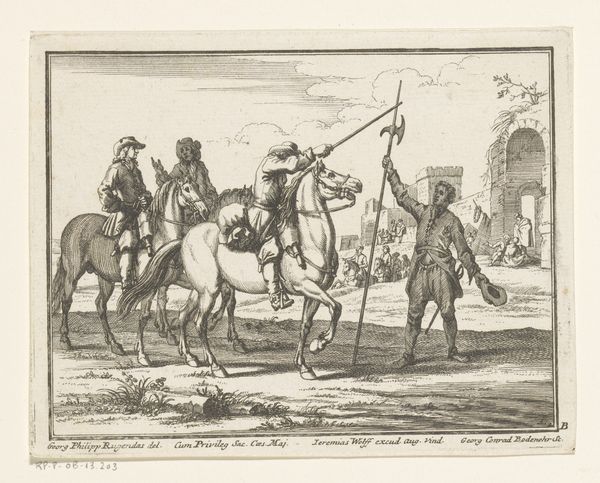
print, engraving
#
baroque
# print
#
old engraving style
#
history-painting
#
engraving
Dimensions: height 390 mm, width 255 mm
Copyright: Rijks Museum: Open Domain
Curator: Georg Philipp Rugendas created this engraving, "Kanonnen rijden richting Augsburg," around 1705. The Rijksmuseum currently holds it. Editor: My first thought? Overwhelming! It’s a very detailed scene. The scale feels epic, but also very human, almost messy with the number of characters and horses. Like a snapshot in the middle of chaos. Curator: Absolutely. Consider the historical context: Rugendas documented the battles of the War of the Spanish Succession. What might look like "chaos" reflects the realities of 18th-century warfare and military movement, all set within broader power dynamics in Europe. He gives us a street-level view of armies on the move—supply lines, disruptions, all far removed from any romantic vision of battle. Editor: Wow, street-level war—that’s interesting. The foreground figures digging really bring it home. I'm drawn to the exhaustion evident in the slumped shoulders of men and horses. It brings to mind Sontag's claim of documenting reality with as little distance as possible. But here we get a document of something really different: fatigue. Curator: Precisely! Beyond technique and aesthetic choices, thinking critically means engaging with questions about power, representation, and experience. Rugendas highlights the toll on soldiers and the disruptions to civilian life when the focus typically rested solely on military leaders or grand strategies. And it’s useful to consider that Rugendas would later become the director of the Augsburg Academy, suggesting a kind of civic involvement embedded in this print. Editor: Right. A local's document from the home front. Seeing it that way shifts everything. Thanks for pointing out the kind of person behind this "snapshot". It becomes almost a silent scream against the glorification of conflict—that all that's left at home is struggle, not glory. Sobering stuff. Curator: It pushes us to critically engage with art's relationship to conflict—prompting important reflection on art history. Editor: Yeah, and about the stories we think we already know about the past.
Comments
No comments
Be the first to comment and join the conversation on the ultimate creative platform.
